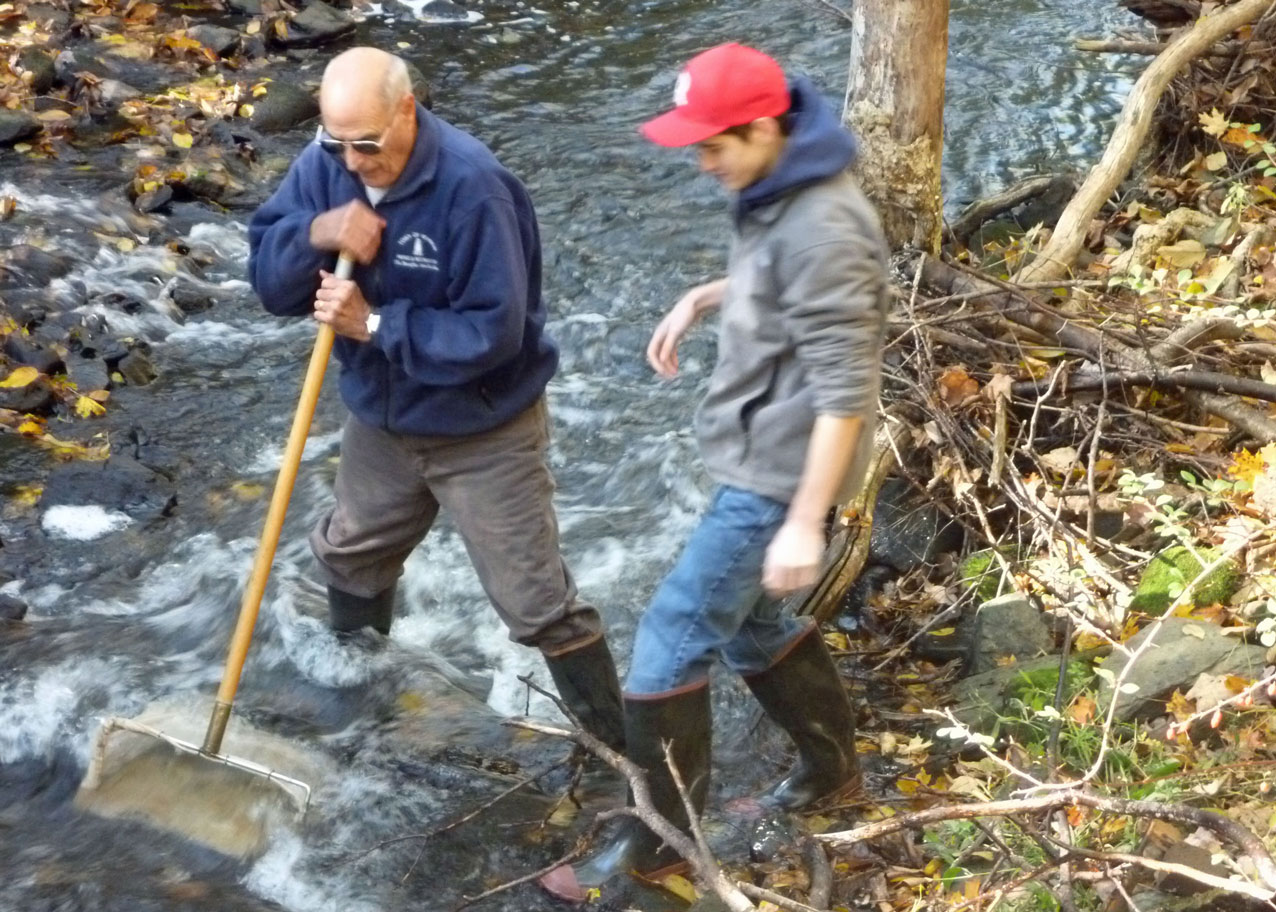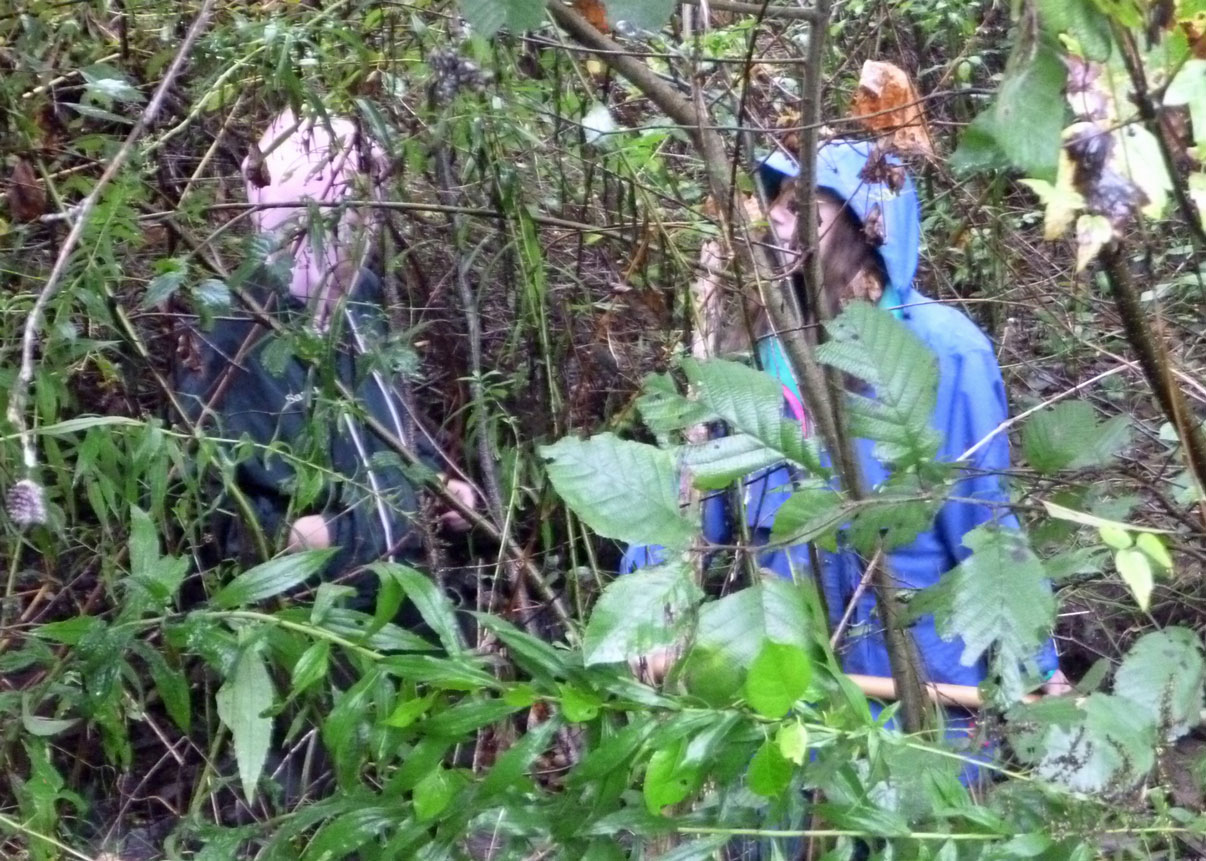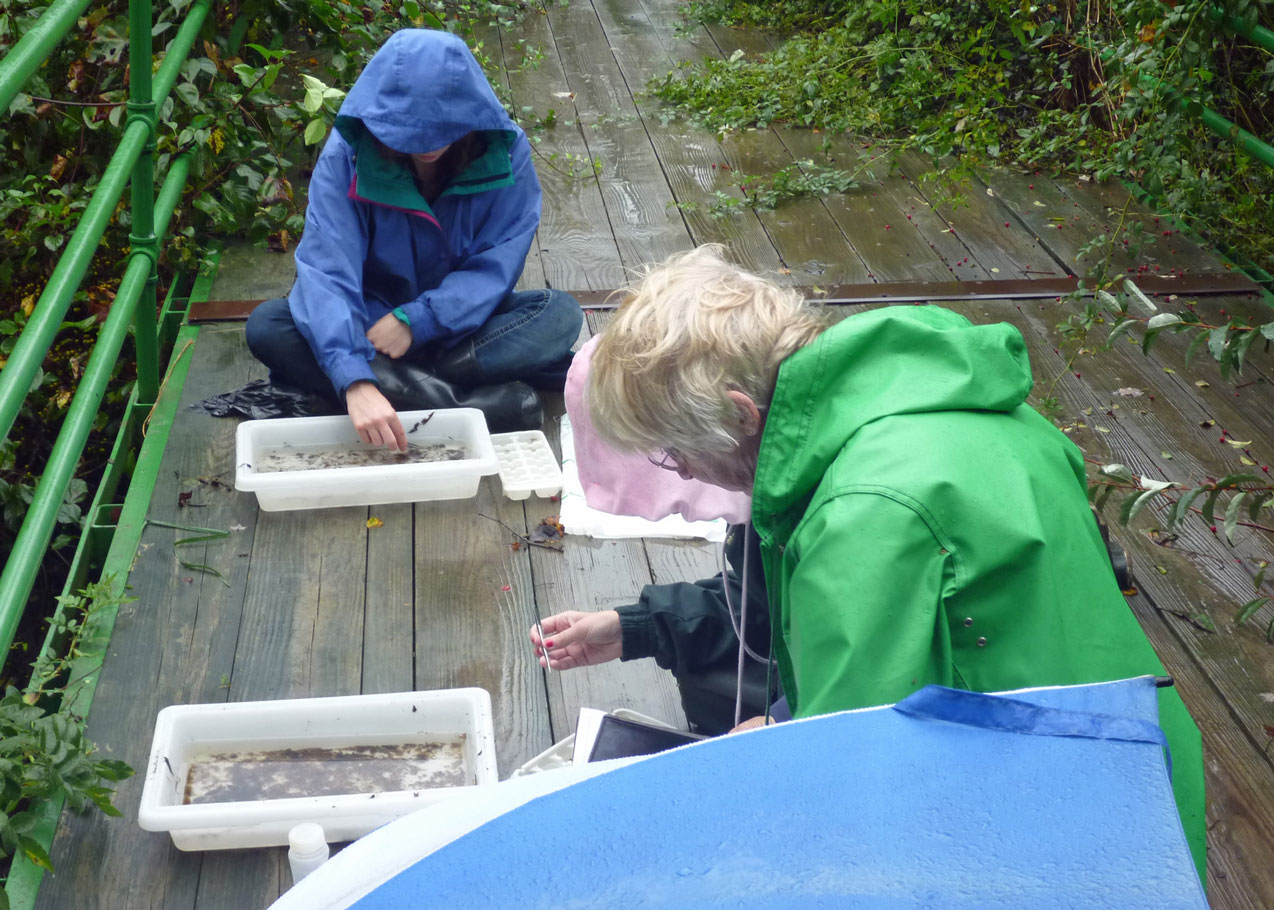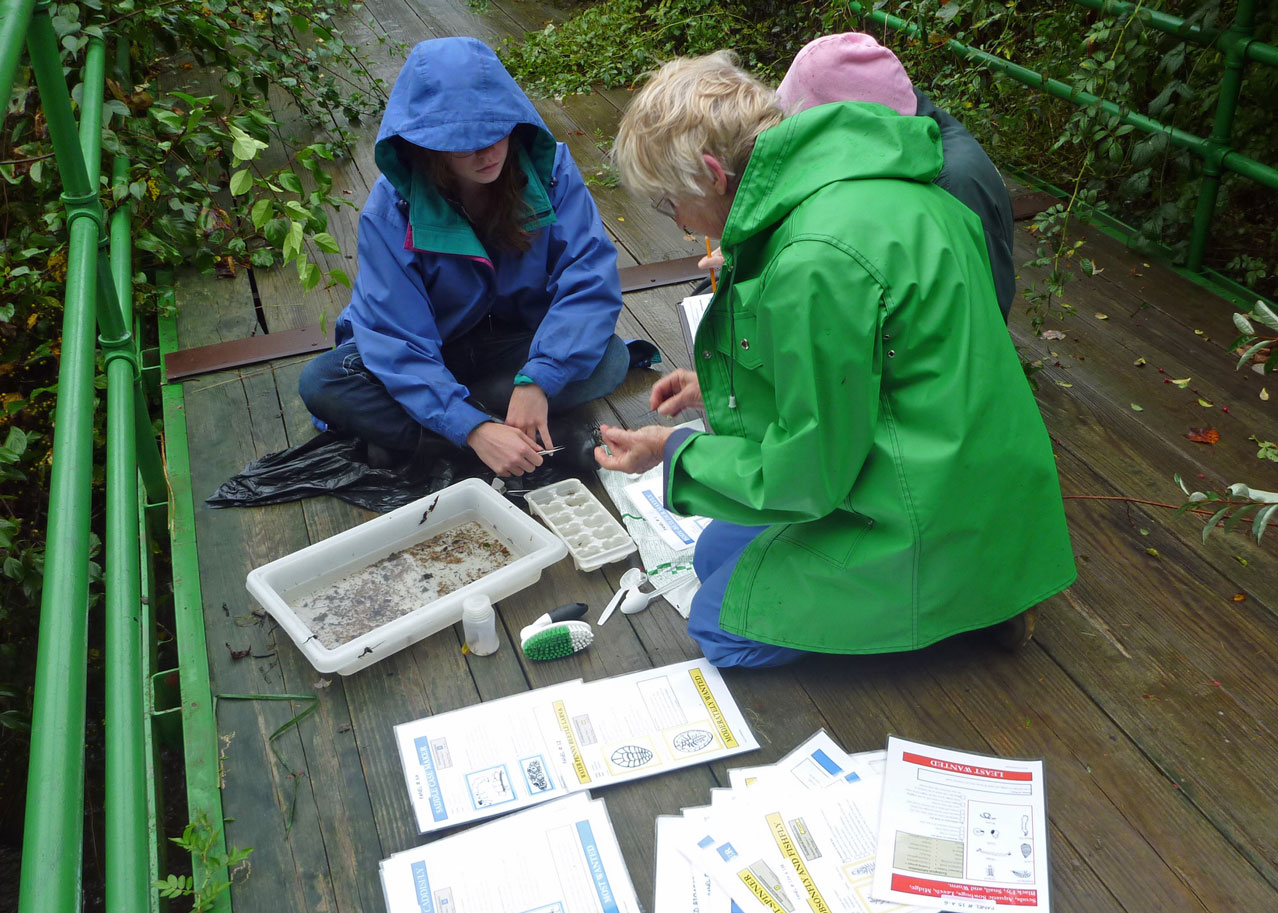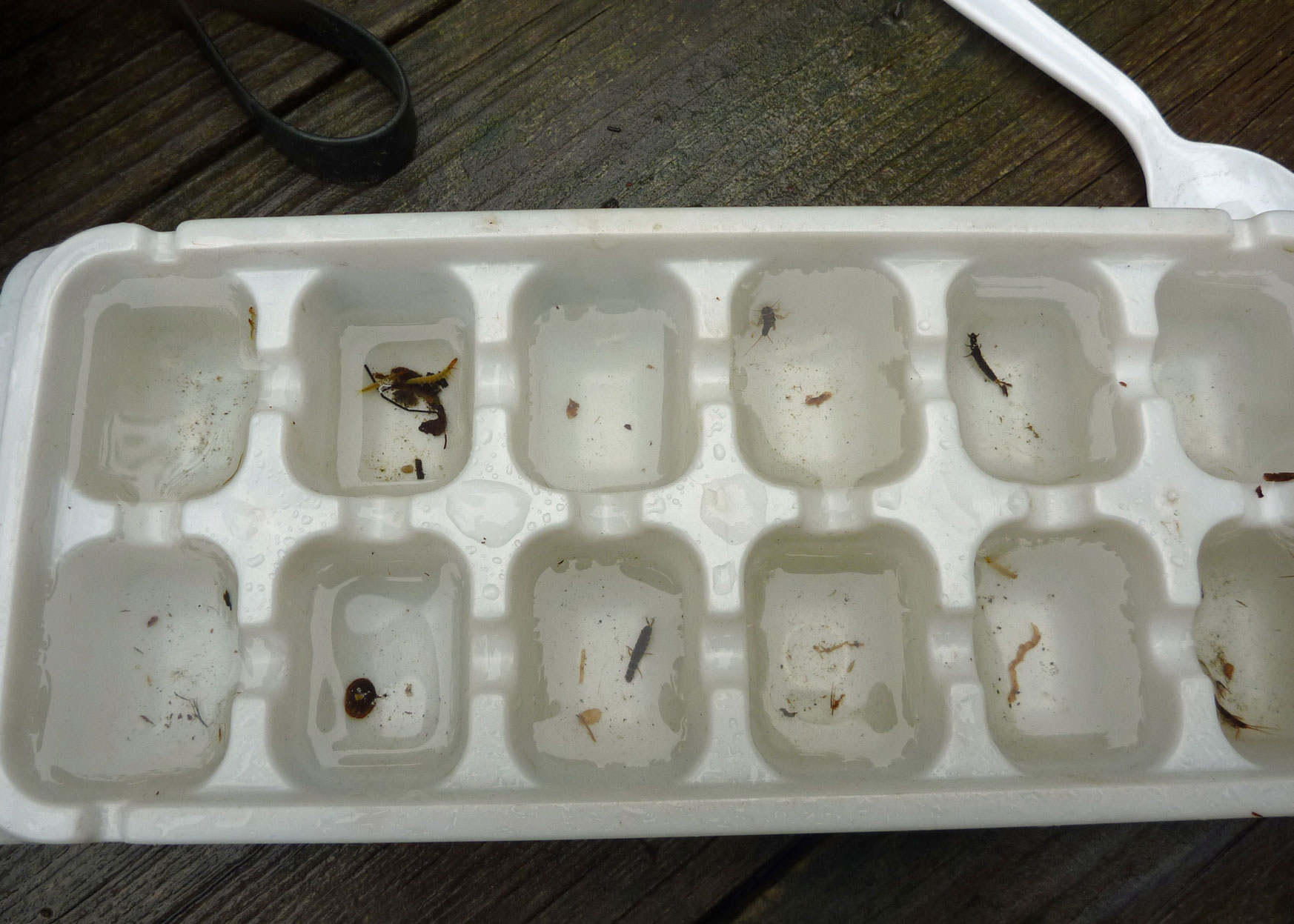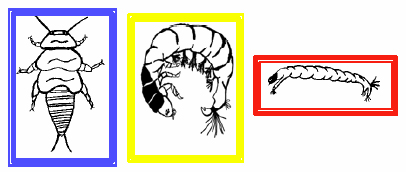 |
| Home | Geography | History | Biology | Recreation | News | Resources |
| Wildlife |
Streambed Biological Survey
Those of us who live in the Tankerhoosen Valley or enjoy it recreationally appreciate a healthy river, but tend to forget that it takes work and the contribution of many volunteers to keep it that way. One way to determine the health of the river is to assess how its microorganisms are doing from year to year. If they continue to flourish it's a sign the river is healthy. To check on the Tankerhoosen's microorganisms an annual survey is conducted by volunteers at several locations along the river. Once a baseline is established changes can be tracked. Consider it an early warning system to determine negative impacts on the river so that corrective action can be taken before the situation gets out of control. The Tankerhoosen River Watershed is part of the Hockanum River Watershed which in turn is part of the Connecticut River Watershed. The Connecticut River including its tributaries has been designated the first National Blueway System in the United States, so there is great interest at the federal as well as the state level in maintaining its overall health and this starts in the small tributaries such as the Tankerhoosen River. This leads to the over all Connecticut River Watch Program of which this program, the Hockanum River Rapid Bioassessment is a part. The formal name for the program is the Rapid Bioassessment in Wadeable Streams & Rivers by Volunteer Monitors or just 'RBV' for short. What is the purpose of a bioassessment?The Hockanum River Rapid Bioassessment was undertaken as part of an ongoing community-based effort to document the health of the Connecticut and Hockanum River watersheds. The overall goals include:
How is the sampling done?
RBV is a citizen-based water quality-monitoring program developed by the Connecticut Department of Energy and Environmental Protection's (DEEP) ambient monitoring program. The RBV program is a standardized screening method that keeps the equipment, expertise, and time commitment to a minimum while simultaneously identifying sections of streams with pollution sensitive organisms. The final product is a completed RBV data sheet and a voucher collection (one of each type of organism observed). RBVs are generally scheduled to take place in the fall, during October and November, to document the condition of the macroinvertebrate community following the summer, a “high stress” time for streams due to lower flows and higher water temperatures. Volunteers, including high school science students, receive training in the RBV protocol in an indoor training session prior to conducting the assessment. The entire RBV process is completed at the stream and usually takes 2-3 hours. Sampling and analysis equipment and supplies, as well as reference materials to aid in identification of organisms, are provided by the DEEP. Benthic macroinvertebrates are collected using a large flat-bottom net 12” high X 18” wide. Volunteers collect three replicate samples, each consisting of two one square meter collections or “kicks”, sort and identify the organisms in the field, and document relative abundance of key organisms on official field data sheets for the RBV protocol. Volunteers also keep a representative voucher collection consisting of at least one of each type of organism found, preserved in alcohol. The voucher collection is returned to the DEEP along with the data sheets. Following are the five Tankerhoosen River sampling sites:
What are you looking for?At the core of the RBV program are the benthic macroinvertebrates found in rivers and streams. The benthic zone is the ecological region at the lowest level of a body of water, including the sediment surface and some sub-surface layers. Each organism has distinct shape, structure, color, or behavior and provides key ecological information about the stream environment. Benthic macroinvertebrates are bottom dwelling aquatic organisms that can be seen with the unaided eye, such as stonefly, mayfly and caddisfly nymphs. They are good indicators of water quality for several reasons: many are sensitive to pollution, the composition of the community is a good reflection of long-term water quality (since they live there year-round), they cannot easily escape pollution, and they are relatively easy to collect. In addition, there are many established methods for using macroinvertebrate data to assess water quality and stream health. Benthic macroinvertebrates are collected from shallow riffle areas by disturbing the stream bottom and catching the dislodged organisms in a net. DEEP uses the riffle-dwelling benthic macroinvertebrate community as the primary indicator of biological integrity of freshwater streams. View Macroinvertebrate Field Identification Cards.
What were the results?Higher representation of organisms in the most wanted category - the most sensitive to pollution - is an indicator of better water quality, though in general, streams with representation from all RBV categories indicate good water quality. Based on the numbers of most wanted organisms found at the sites, one can infer that the Gages Brook, Bolton Road and Tunnel Road sites have excellent water quality, and the Dobsonville Pond and Golfland sites have very good water quality.
Both the 2009 and 2011 Tankerhoosen RBV data show good representation from the moderately wanted category, with more limited representation from the most wanted and least wanted categories. Organisms in all categories but least wanted were represented at all sites. The best representation of most wanted organisms was found at the Tankerhoosen Bolton Road site. Overall, the Hockanum RBV results compare favorably with similar volunteer bioassessments done around the state, with one site above average with respect to most wanted organisms, and four sites average. The 2011 study conclusion is that the bioassessment results show some anomalies compared with previous years, in particular with respect to the decline in most wanted organisms overall in 2011, especially at the Gages Brook site. The general upstream-downsteam decline in quality in the Tankerhoosen River is not quite as pronounced in 2011 as it was in 2009. While it is of concern that numbers have declined at some sites, ongoing annual bioassessments will help determine whether these changes reflect actual changes in water quality, are simply anomalies, or are the result of year-to-year variability in volunteer teams. The studies all corroborate the need for river improvement and protection. Continued monitoring will help assess real changes in water quality and stream health over time, and document improvements resulting from ongoing management and restoration activities. Who conducts the study?The event is organized and led by the Friends of the Hockanum Linear Park of Vernon, Inc.. Cooperating organizations include the Vernon Hockanum River Linear Park Committee (Special thanks in particular to member GEORGE ARTHUR, for leading field teams.); two state Conservation Districts, the North Central and CT River Coastal districts (Special thanks to JANE BRAWERMAN, who prepares the reports for our Vernon results.); the Vernon Conservation Commission (Special thanks to TOM OUELLETTE, who serves as field team co-leader.); the Rockville High School Environment Club (Special thanks to SARAH SMITH, who serves as a field team leader, and her students.); Manchester Community College Environmental Sciences Course (Special thanks to Professor ANN HANDLEY and her students.); and the Connecticut Department of Energy & Environmental Protection (Special thanks to MIKE BEAUCHENE, who does the laboratory analysis of the voucher collections, records the statewide results and prepares the state report, and JANE SEYMOUR, who provides with the training presentation and leads a field team.). The Friends of the Hockanum River Linear Park of Vernon, Inc. provide funding to the CT River Coastal Conservation District for preparation of the report each year. Special thanks to member ANN LETENDRE, who has organized the event annually for the Tankerhoosen assessments. ReferencesThis article includes information found in the following references: RBV Final Report for 2009 to 2011 - Dig into the detail of the study and review the data collected. DEEP Report of data collected statewide. DEEP's Rapid Bioassessment in Wadeable Streams & Rivers by Volunteer Monitors (RBV) website - Here you'll find a wealth of information on the program including instructions and macroinvetibrate identification cards. Tankerhoosen River Watershed Management Plan - The biological assessment supports the overall management plan. | ||
Home | Activities | News | References | Search | Site Map | Contact Us © Copyright The Tankerhoosen. All rights reserved. |
